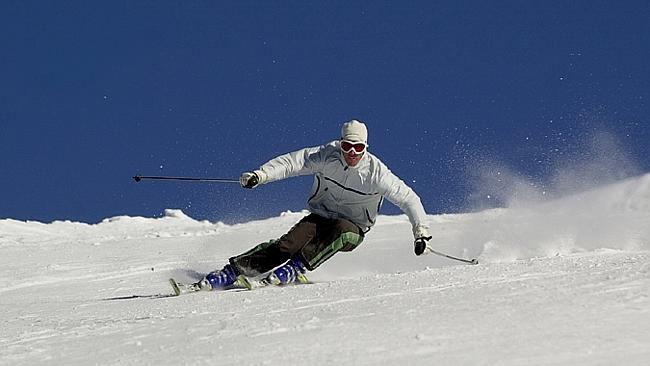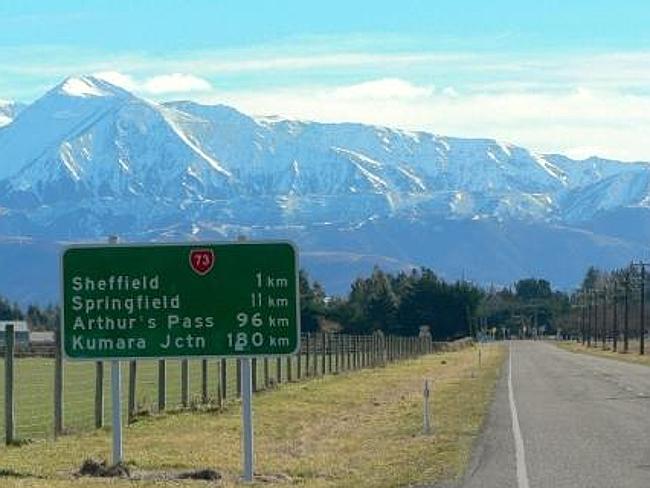Why being a ski instructor in New Zealand is the best job on Earth
THE life of a ski instructor is something most of us only ever dream about. So what’s it really like having your office on the slopes?

THE life of a ski instructor is something most of us only ever dream about.
Imagine your office being a mountain and your days off involving parties, cliff jumping and heli tours.
Stephan Skrobar, a 41-year-old from Austria, did just that spending many seasons working on New Zealand’s slopes. We chat to him about life as a ski instructor and why he thinks he has the best job in the world.

Why did you decide to become a ski instructor?
“Being Austrian I started skiing at a very young age, then raced a bit and did a lot of ski mountaineering as a kid. I fell in love with New Zealand when I was 18 and figured working as an instructor was the easiest and most fun way to spend time in the country. Skiing has always been and still is my passion.”
So where did you work?
“1994 — 1995 Porter Heights, Canterbury as a ski instructor and race coach.
1998 — 2002 Treble Cone, Wanaka, as a ski instructor, race coach and instructor trainer.
2009 Treble Cone, Wanaka as an instructor trainer.”
How did you get the job?
“It was, bureaucratically, a lot harder than anticipated. There are way more instructors from the Northern Hemisphere looking for work during their summers than there are positions. It took me two years of gaining more and more qualifications and continuous letter-writing to ski schools.
Also, work visa requirements are a nightmare if you are from Austria. I had no other connections, but finally got a job at a small commercial field close to Christchurch, called Porter Heights (now Porters). Once you have the foot in the door it gets easier, your global network of like-minded people expands, your competence and experience grows rapidly.”

Tell us what a normal day looked like for you
“Well, at Porters we had a small but really tight team of instructors.
We stayed in Springfield, a friendly town smaller than an average-sized rugby pitch, at the end of the Canterbury Plains and either lived scattered around the pub, or, for convenience, right behind the pub.
At about 7am we took the van up the mountain, a 40-minute commute. Then checked how much worked was scheduled for the day. On average we instructed for about four hours, mostly beginners and school kids.
We spent pretty much every other free minute of the day skiing together, either racing or cruising the vast back-country terrain at Porters and jumping off cliffs.
Back at the end of the day, either rock climbing at Castle Hill, playing frisbee or to the pub for a few jugs and a game of pool.
It was an unbelievably brilliant and easy lifestyle, we made no money, but the atmosphere was lighthearted and friendly. The first season at Porters was probably one of the best winters of my life. And I’ve had a few good winters.”

Have you got some funny stories from your time as an instructor?
“There have been thousands of stories over the years but I had a particularly funny one at Porters. I was instructing a group of teenagers, beginners, all looking like your typical Kiwi bogans.
By then I was used to teaching kids that smoke while skiing, crack open cans of beers in the beginners area and just being as punk as I was.
But these kids were even tougher (I thought), because apart from leather jackets, cheap cigarettes, cans of Canterbury Draught and worn out ski rental boots, they were swearing their heads off like you wouldn’t believe.
The extent of f- and c-words was staggering, I was blown away and silently laughing.
Turns out they all had Tourette syndrom. Seriously. A fantastic day.”
So, is life off the slopes all parties and debauchery?
“That’s for me (and everyone else who works in the industry) to know and for you to find out.”
Was there a pecking order among instructors?
“There was a list of seniority according to experience and qualifications which was used when allocating work, but no definite pecking order.
Both at Porters and Treble Cone (which grew into becoming my real global home spot over the years) the atmosphere within the team was astonishingly egalitarian.”
Where else have you worked? How did your experiences compare?
“Apart from New Zealand I have worked or trained in Australia, Japan, Korea, Canada, Austria, France, Bulgaria, Switzerland and the Czech Republic.
I have trained instructors for the ski instructor associations of Austria, New Zealand, Australia, Canada, the UK, Bulgaria and the Czech Republic.
The differences are obviously mainly cultural, the similarities are how much you actually gain from these cultural differences. That is part of the priceless experience you get from having worked as a ski instructor all over the world.”

What are you up to now?
“I run a freeride centre called Die Bergstation in Austria, operating all over the Alps. I am a member of the Fischer Freeski Team and manage the Pieps Freeride Team. I examine ski instructors and write expert articles for ski and mountaineering publications. Winter has become a year-round job.
I also completed a Masters degree in communications in Austria and in Christchurch, New Zealand, and run a communications agency in Austria.”
What is the worst thing about being a ski instructor?
“Having to talk all day when you really don’t feel like it and getting injured.”
And the best thing?
“I guess one of the greatest benefits I got out of working in New Zealand was that the country, and Wanaka in particular, became my on-and-off home town over a period of two decades.
There were years when Wanaka was the only place I continuously lived in for longer than four months, I slowly became part of the local community and still have great friends there.
To a smaller extent I also have that in Japan and Australia, but New Zealand will always be my home away from home.”
Tell us something we don’t know about life on the slopes
“Life in the mountains is not as hard as everyone thinks. There are friends on powder days.”

